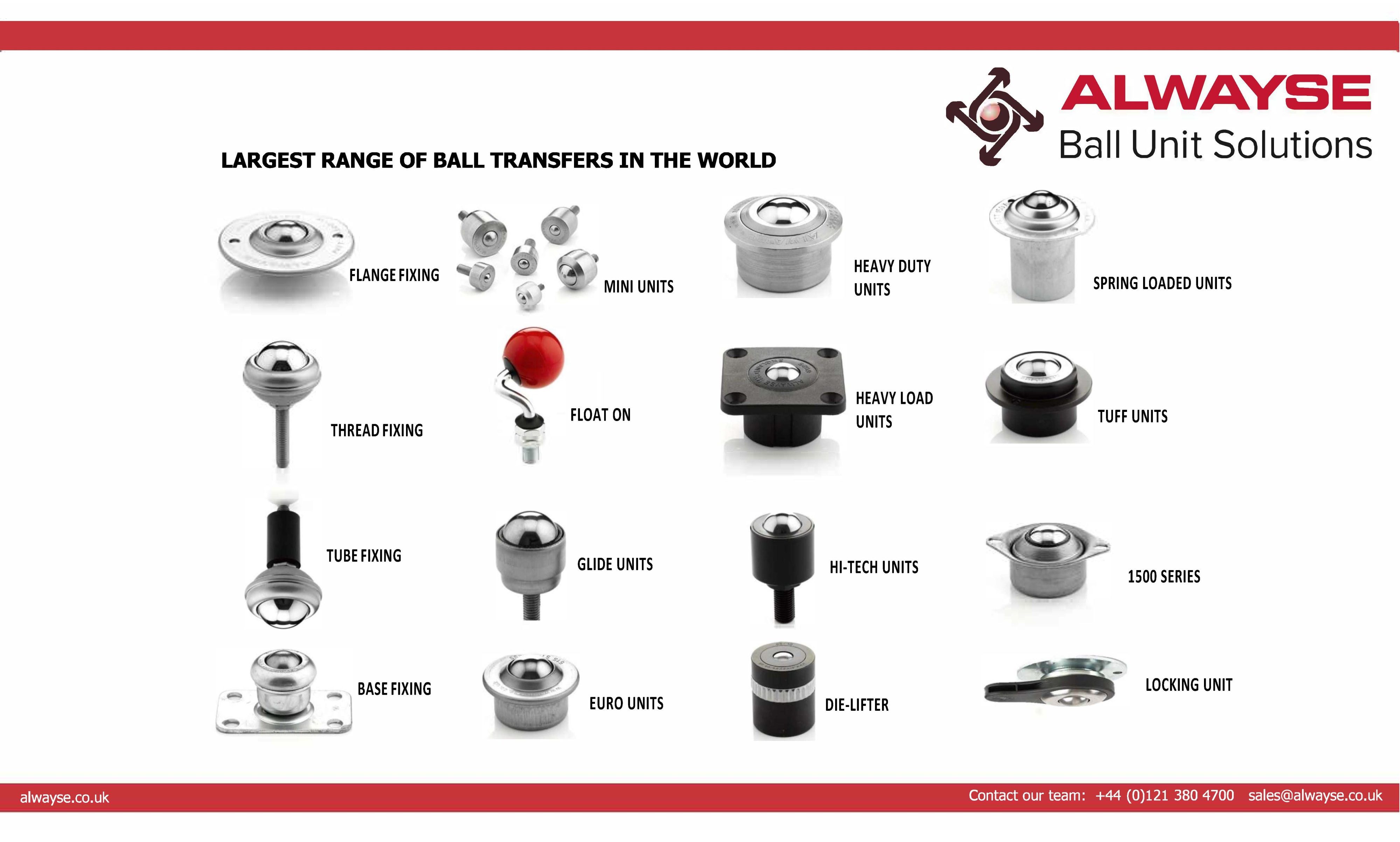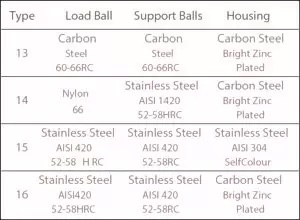Ball Transfer Unit
ALWAYSE ball units are a multi-directional, material handling system, manufactured from quality materials. Moving in all directions, ball transfer units enable the easy transfer of light and heavy loads – changing the direction of motion instantly.
They consist of a large load-bearing ball which sits upon multiple smaller balls encapsulated in a hemi-spherical cup. The housing can contain a seal to clean the load ball as it rotates. The design greatly reduces friction and allows heavy loads to be moved with a mini-mum of effort.These ball units may be used at any orientation but deviation from the vertical may result in a reduction in the stated load ratings.
Click here to view our range of ball transfer units
Fixing Methods

There are various methods of fixing Alwayse ball units. A wide range of fittings enable them to be used with various different materials.
Materials

ALWAYSE ball units are available in various materials. The material required for your ball units should be quoted when ordering.
Lubrication
Each unit is pre-lubricated during manufacture and normally does not require further attention. In certain instances we will advise on lubrication. Greasing or oil points can be incorporated in some units.
Cleaning
For cleaning use a suitable agent such as AC90 or WD40. Please consult Technical Support for advice.
Most designs have dirt exit holes incorporated in the bearing cup, or these can be added on request.
Shock Loads
When calculating loads, consider the possibility of impact caused by incorrect levels. Spring loaded units will reduce wear and tear if there are regular shock impacts. Shock loading can also be reduced by fitting compressible pads. Ball units can be made retractable by other means, such as pneumatic or hydraulic cylinders, cams or levers. They can be programmed to operate in sequence.
Self Leveling
This can be achieved by fitting rubber pads. This will reduce excessive loads on just a few units. Details on request.
Temperature Range
Min. -30ºc to max. +70ºc continuous, or+100ºc intermittent. Special seals may need to be fitted to suit extreme conditions. In clean conditions and without seals +150ºc to +200ºc are possible, using Type 15 units at reduced loads.
Conveying Speed
Maximum recommended conveying speed is 1 meter per second for steel load balls and 0.25 meter per second for nylon.
Seals
These help resist ingress of dirt and swarf. They can be omitted on request. Woollen felt seals fitted as standard.
Breakaway Coefficient of Friction
The average breakaway friction for new ball units containing steel balls in a good working environment is 0.01 to 0.015 (1% to 1.5% of the load) and 0.02 to 0.025 (2% to 2.5%) for units with felt seals.
Quantity Calculation
The weight of the article to be conveyed should be divided by 3. The result will give the maximum load any single ball will bear.
On any accurately leveled or flexible surface, a number greater than 3 may be used. The surface hardness and condition of the article should be considered to avoid ball unit penetration.
